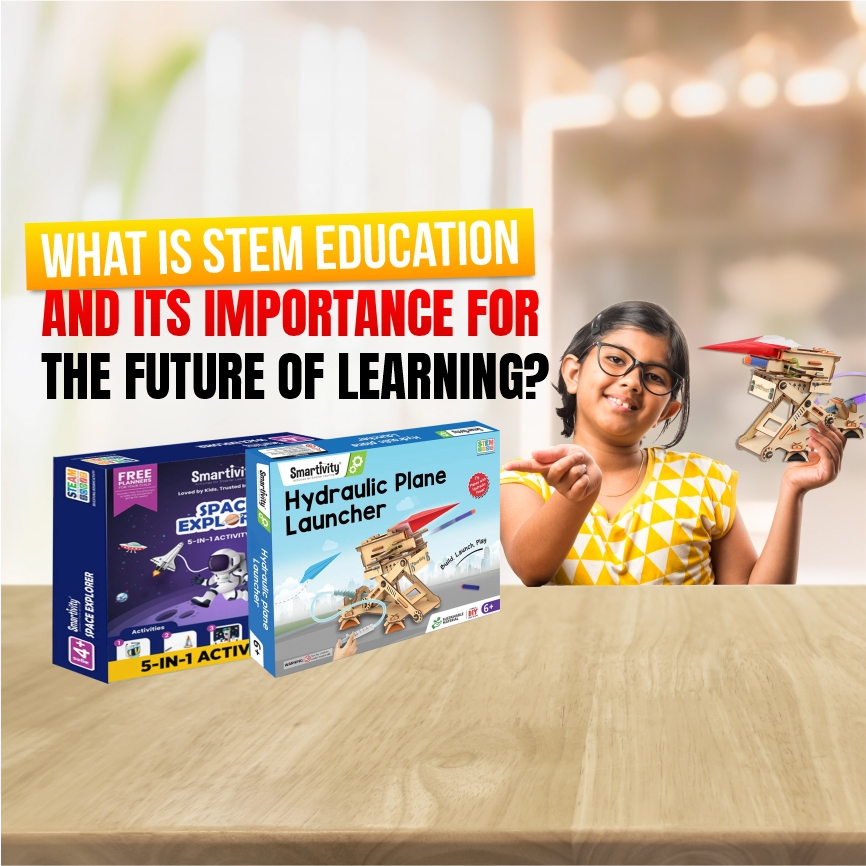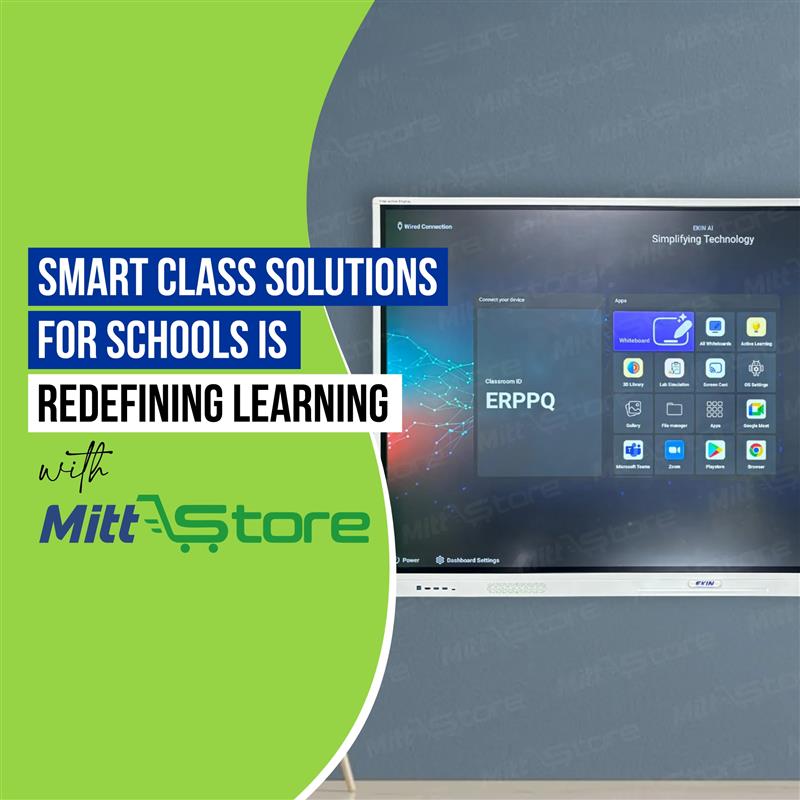As Education is making way for new developments and technologies to come in, schools and educators are shifting their way of teaching and feeding information to young minds. Where the traditional way of teaching included mugging up the theories or rote memorization, now seems not enough to prepare the students to face the future challenges. The current time demands going beyond the textbooks, so that students get to learn how to solve problems better, nurture their creativity, shape their critical thinking, and adapt to situations and challenges. This is where STEM education is required.
STEM stands for Science, Technology, Engineering, and Mathematics, which looks like they are just 4 subjects but when you look at a broader perspective, it is more than just the application. It is a holistic, interdisciplinary approach to learning where students get to connect their classroom knowledge to the real world and apply it for a better living.
So let’s read through what is STEM Education and why is it a necessity to be incorporated in any child’s curriculum?
What is STEM Education?
STEM is an umbrella term that groups:
- Science
- Technology
- Engineering
- Mathematics
STEM education focuses on developing the foundational skills of students like problem solving, critical thinking, and collaborative functioning, which, in turn, lays the groundwork for innovative education in all the subjects mentioned above.
In short, STEM education is about integrated learning. Where students don’t learn subjects separately, but also learn all disciplines while connecting it with topics simultaneously. Like when they are taught about plant growth, they also come to know about measuring growth rates (helping in covering mathematics), using sensors or apps to track data (teaching them technology), while also brainstorming on how to design a greenhouse model (showing them practically on how engineering works).
With this approach, they get to shift their learning from just knowing everything in theory to hands-on, inquiry-based, and experiential. So students don’t just memorize the facts, but get to explore, experiment, and create solutions to their topics.
Why is STEM Education Important?
It Develops the Future-Ready Skills
STEM education theory builds the skills of critical thinking, problem solving, creativity, and innovation. These learnings are important for students to develop to keep in par with the evolving education.
It Bridges the Gap Between Classrooms and Real Life
Most students learn formulas, definitions, etc, in order to score good marks in their education, and thought they score well and think they have been knowledgeable, but they still might lose when it comes to tackling the problems in real life. So with STEM, students get to understand the concepts like climate change, robotics, space exploration, in a way that if they feel stuck in any real world issues, they are able to process the solutions.
It Prepares Students for Career Opportunities
With the higher demand for STEM professionals rising globally in fields like artificial intelligence, data science, renewable energy, healthcare technology, and robotics, students have more options to develop their career better with STEM education.
It Encourages Innovation and Entrepreneurship
STEM Education teaches students more than theory. They get to learn through projects and design thinking which helps them develop the confidence so that they can innovate and create better solutions. There are many successful startups and innovations worldwide which require a strong STEM foundation.
It Builds Collaboration and Communication Skills
Most of the STEM projects come with team work and collaboration. This lets students learn how to share ideas and communicate effectively, which are essential skills for both academic and professional life.
It Reduces Learning Gaps
STEM education is highly inclusive. It engages students of different learning styles by combining visuals, experiments, technology, and group discussions. This makes it easier for every learner to connect with concepts.
Initiatives by the Government of India to Strengthen STEM Education
Indian education has also laid great importance in STEM education and has made it a national priority. To ensure that students are future-ready have enough opportunities to shape their skills, the government has rolled out several important initiatives:
Collaboration Between DST and IBM for Girls in STEM
The Department of Science & Technology (DST), under the Ministry of Science and Technology, partnered with IBM in October 2020, so the meritorious girls got better STEM opportunities. This collaboration made the other initiatives also impactful like Vigyan Jyoti (to encourage girls in STEM careers) and Vigyan Prasar – Engage with Science (to make science accessible and engaging).
The role of IBM in this collaboration was to connect directly with teachers and students by conducting interactive resources, mentorship, and workshops. It not only was planned to break the gender barriers but also to ensure that STEM is a fair opportunity inclusive and accessible to all.
Ministry of Education’s Global Opportunities
The Ministry of Education has been proactive in connecting Indian students to global opportunities in STEM. For example, in September 2022, the Ministry released a public notice about Early Academy Fellowships offered by UK universities under the British Council scholarships.
These initiatives open pathways for Indian students, especially women, to pursue higher education in STEM abroad, gain global exposure, and return with skills that strengthen India’s innovation ecosystem.
Atal Innovation Mission (AIM) and Atal Tinkering Labs (ATL)
One of the most impactful initiatives is the Atal Innovation Mission by NITI Aayog, which has established Atal Tinkering Labs (ATLs) in schools across India. As of August 2021, around 8,706 ATLs had been set up, with nearly 60% in government schools. With these labs students get hands-on STEM opportunities whether it is robotics, 3D printing, coding, electronics, etc.
Students also engage in competitions, workshops, and exhibitions, developing creativity, design thinking, and innovation skills. With ATLs, students don’t just learn STEM in theory but also get to apply them in their real world problems, and this is exactly the current demand for the future education.
How Mittstore Is Shaping STEM/STEAM Education to Be Better
At Mittstore, we believe that STEM education is the upcoming necessity and should be a foundation that every school builds upon. Our STEM education product offerings make sure students get to learn with tools that inspire, innovate, and add value in true sense.
When students start to learn the practicality of STEM education, what they need is confidence to answer their curiosity before they start delving into the complexities of it. Our STEAM collection includes levelled kits like “STEM Engineering Kits, Robotics & Coding Kits, Kits with Circuits & Sensors” which are clearly tiered (Level 1, Level 2, Level 3, etc.). With these kits students can start in a simple way with plug-and-play circuits, no coding and then move to more advanced robotics, coding, AI etc. The STEM Kits at Mittstore are planned as per the right age and capacity of the students bringing out their cognitive readiness so that teachers get to integrate this into their curriculum too.
Most of our products in Mittstore’s collection are not passive. They require students to build, experiment, test hypotheses, make mistakes and iterate. Like our
robotics kit with motors & sensors pushes
students to understand cause & effect (if I change the wiring, what happens?). Similarly, the circuit & sensor kits let kids see light, sound, or movement when certain thresholds or conditions are met. This way students get to learn far more deeply than just passively consuming knowledge. It helps in students developing real thinking, implicating hypothesis, testing, error, improvement.
And not just it, our kits are all aligned with CBSE/ICSE ensuring that students are mapped with their syllabus and curriculum so that it adds to their capacity to score well instead of having STEM Education as a side knowledge to gain in free time. And our products cover a wide age span, right from early levels like LKG / nursery / home-learning boxes to higher levels for older students. There’s Plug & play electronics so even beginners can safely experiment without feeling lost. Modular parts, which means schools can reuse / upgrade rather than buying completely new kits every year. There’s also clear teacher manuals or guides to help educators make best use of the kits even if they don’t have deep STEM specialization.




